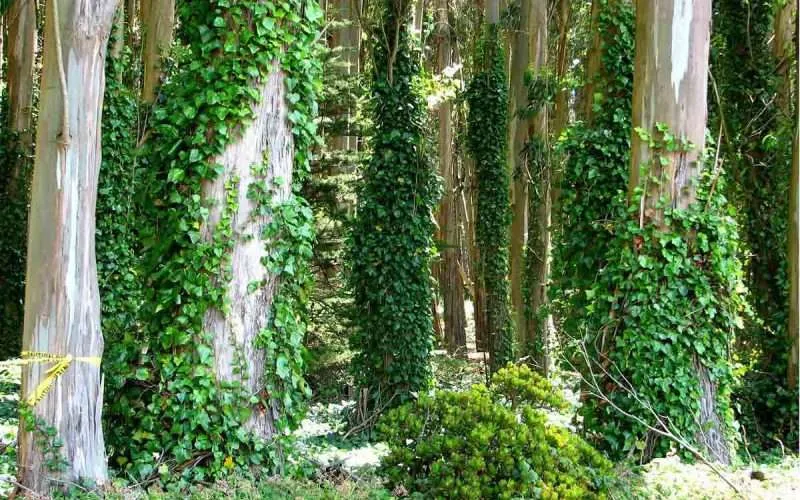Table of Contents Show
Vines growing on trees can look like an artist’s dream come true. You can look at the vines on an oak tree for instance and you realize just how beautiful they look. Maybe, that green is the stuff that poetry is made of.
But what should you do if you have vines on your oak tree? Just let them be because their mere existence feels like poetry to you? Would that even be wise?
Depending on how extensive the spread of the vines on the tree is, take measures accordingly. The ultimate goal is to ensure that the vines don’t harm your tree in any way.
If the vine coverage is only over a small area, such as the roots, they could remain undisturbed. The real problem arises when vines begin to grow out of control and start causing damage to the host tree.
3 Major problems caused by vines growing on oak trees
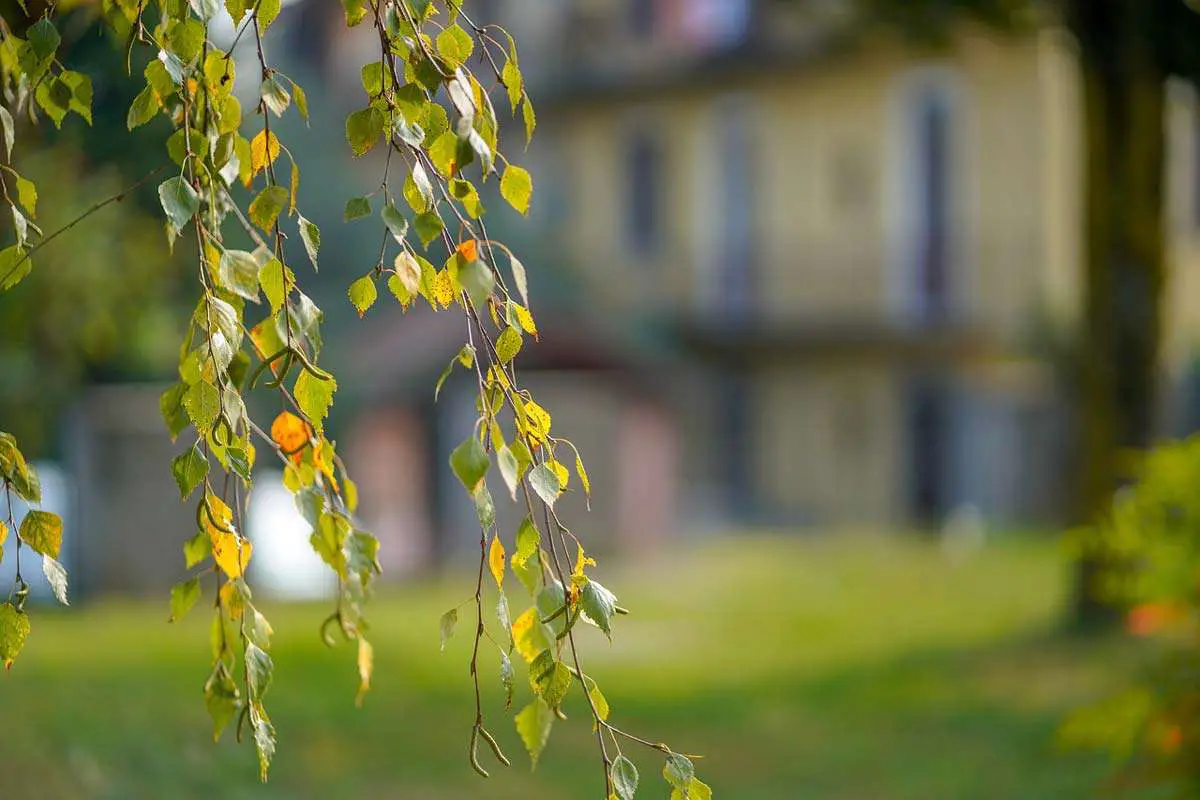
Of course, you can’t have vines growing on your oak trees without some repercussions. These could come in any form such as leaves getting affected, or the trunk or roots suffering from the effects.
Since vines can be parasitic in nature, it is impossible that they should benefit their host tree in any way. Rather, vines tend to exploit the plants they are growing on, by taking important nutrients away from them.
At the end of the day, vines can mature almost without putting any energy into the process. Unlike other plants, they do not require the same amount of effort to stay alive either.
Every part of the host tree, trunk, bark, roots or leaves are used by vines to assist their own growth. So much so that the root system to the canopy, trunk, bark and lower branches…nothing is safe from vines.
1. Suffocation of the trees
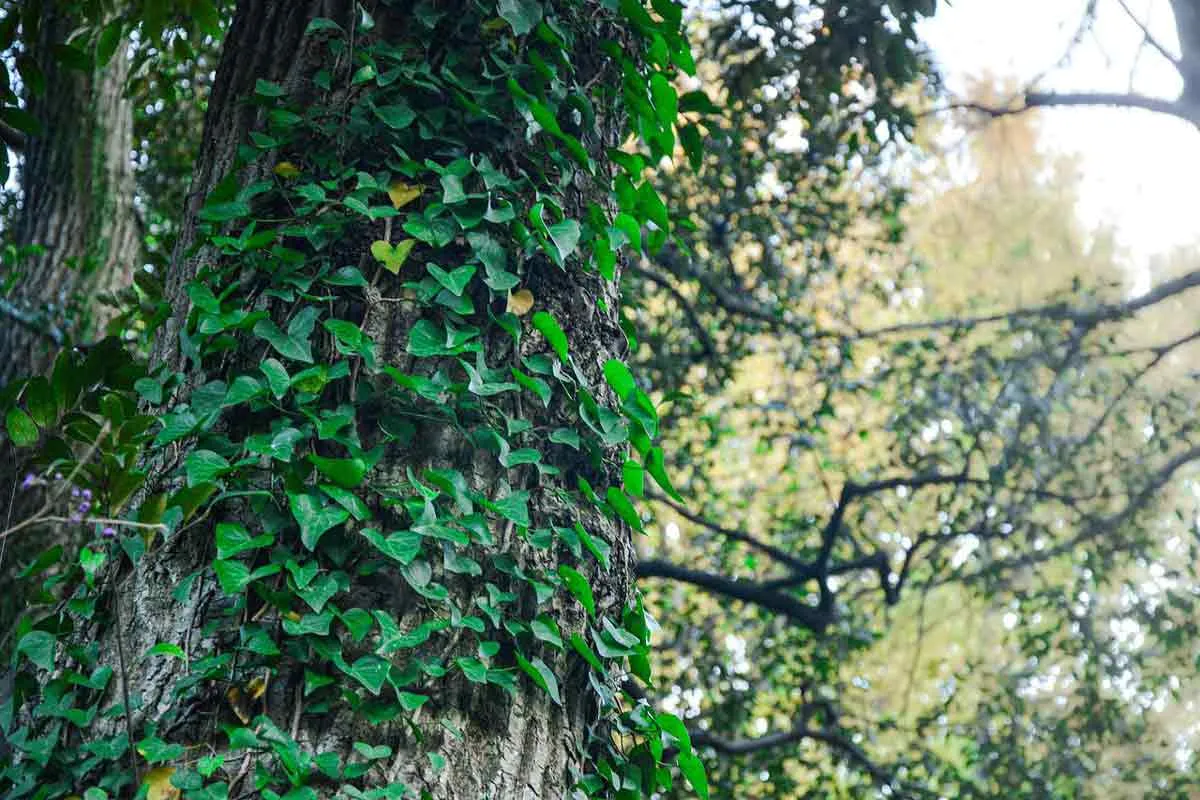
Imagine having a pretty blanket wrapped around your face. Tightly. That’s suffocating to say the least. Even if the blanket looks beautiful and picturesque. That’s sort of what it feels like for trees that are completely covered by vines.
Vines are able to actively suffocate and strangle trees, even those as big and hardy as oaks. Having vines wrapped tightly around them, and sharing nutrition means that the host tree is unable to perform routine functions.
This means that the survival of the tree itself is put at risk. Different access points, from the root to the canopy are limited by the vines. This makes survival and access to nutrition hectic for the host plant.
Of course, one valid argument here is that not all vines have the same level of aggression. Then again, not all trees have the same levels of susceptibility either.
This means that the survival of the tree will vary on a case-to-case basis. Mature trees may be able to survive, but those that have not attained maturity, or are old, will face problems.
2. Taking resources from oaks
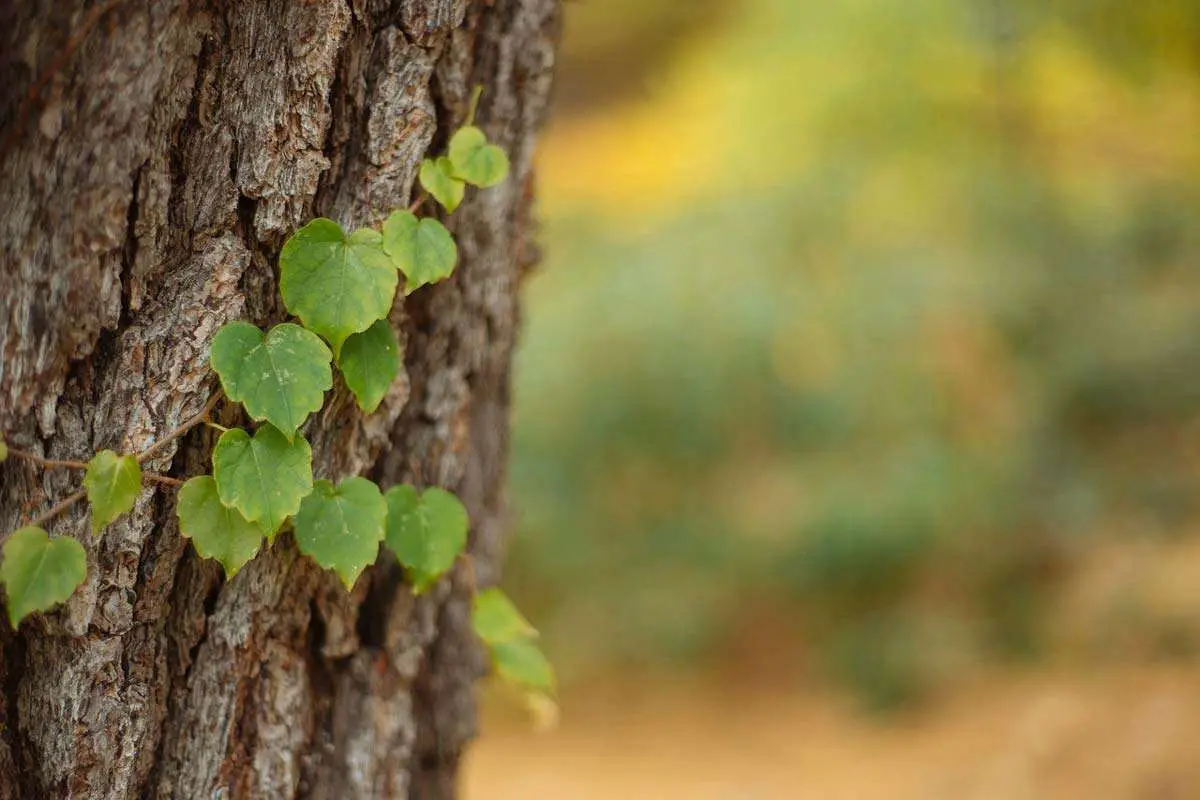
Another issue that host plants will face, as regards their survival, is the access to resources. Overall, both resources that are available in the environment as well as internally available, which the plant needs, are affected. The sufferer here is the tree’s life force.
Vines are generally non symbiotic in nature. They also generally manage to suffocate their host tree by taking away vital nutrients, nitrogen and water, from the host.
This translates into a slow and extremely painful death for the plant in question. It will face both starvation and loss of water caused directly by the vines grappling it to death. Hence the lifespan of the oak could be significantly diminished.
3. Vines leave oak trees more susceptible to future damages
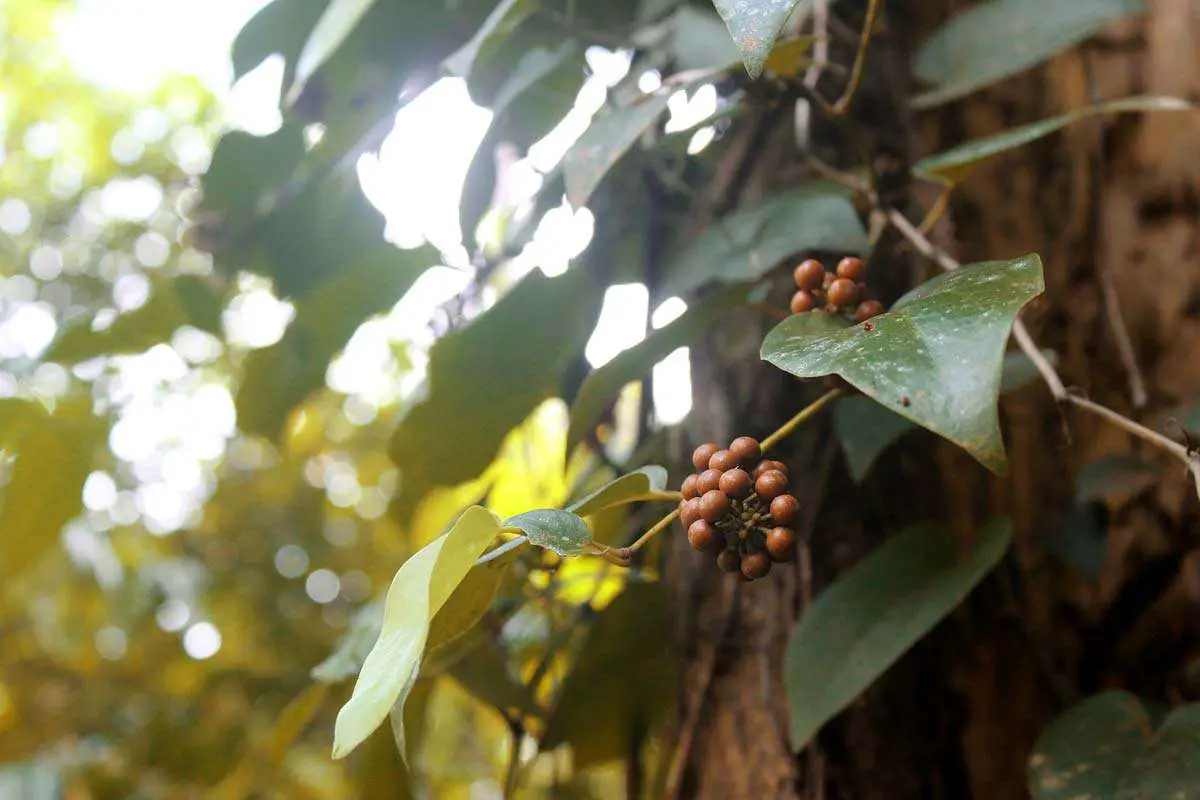
Having vines wrapped around a surface, especially the base of the tree, increases the amount of moisture near the roots. This can lead to higher risks of damage caused by decay, diseases, damage by rodents and insects.
Trees damaged this way face far more severe consequences than trees that face strangulation by vines with moderate growth. For starters, they are left more susceptible to diseases and damages caused otherwise.
According to most specialists, tree death by strangulation is rarely a result of suffocation caused by aggressive vines alone. Secondary issues could include bark decay or insect infestation.
Most importantly though, you need to understand that the vines don’t just affect a single tree.
Studies indicate that invasive species of vines actually impact entire forests and habitats.
Think about it. As a tree gets affected, it succumbs more easily to diseases, pathogens, and vicious attacks by rodents and other critters. These attacks could permanently damage the tree.
The wildlife living in the tree, or dependent upon it as a food source or shelter and would lose resources. All in all, the entire ecosystem of the area would be affected.
It’s impossible to assess the damage that invasive vines can do to an oak tree or a forest of oaks. In fact, while the death of one tree may soon become apparent, the deaths of entire forests aren’t immediately obvious.
Suffice to say, when dealing with vines, it is important to deal with them immediately so as to prevent further damage.
What can you do about vine growth on tree trunks?
If you have vines growing on your tree trunks, it could be time for you to understand just how these vines could impact the growth of your tree. But before you do that, have a look at the two most common types of vines that are found on oak trees.
1. Ivy
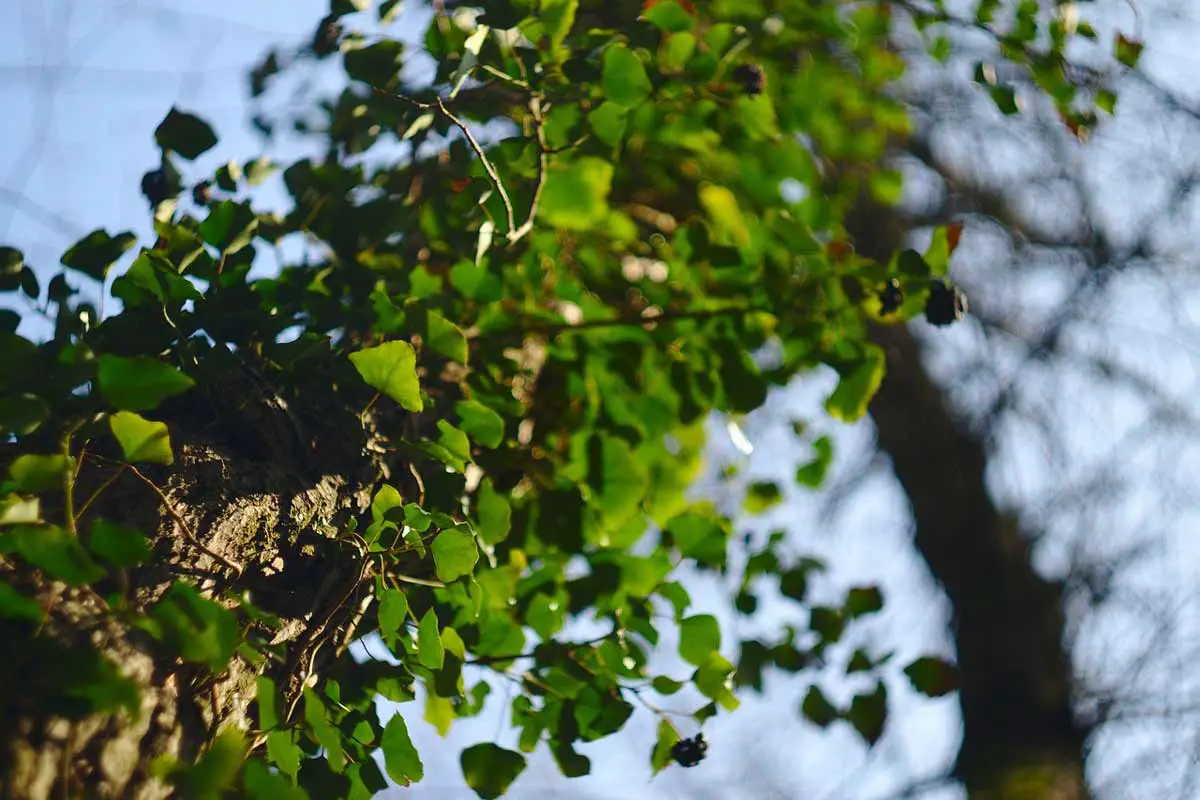
Ivy, in its many forms, is one of the most common types of vines that can be found growing on oaks. The best part about ivy, if there can be anything good about it, is how it does not harm the vascular system of the oak.
Other than that, ivy plants, in particular an exotic looking ivy plant such as English ivy, is often added to landscapes. They make the landscape look a lot more visually appealing by giving it that pop of color also.
However, ivy does not have any impact on the plant’s vascular system. It does attach to the bark of the oak tree using tendril-like root structures though. These root structures sprout from the underside of the ivy stem and can, over time, coil around the oak bark.
Ivy plants also release a sticky substance that helps the stem and leaves stick to surfaces like the tree bark. This provides them with much-needed support to climb upwards.
While this proves that ivy doesn’t really harm the tree directly, it is named an invasive species for good reasons. Since the ivy and oak will be depending on the same source of nutrition, malnutrition could be the oak’s reality.
The ivy could also grow up to the oak’s canopy and thus block the oak tree’s direct source of sunlight. Removing the ivy could be an excellent idea, but before you pull those vines off your oak, check their type!
Types of Ivy
There are two major, most common types of ivy that you need to watch out for. Depending on their type, you may work out a removal plan that works with the ivy-type.
- English Ivy
The best way to identify the ivy is by looking at the leaves of the plant. Young English Ivy leaves have three to five lobes. The middle lobe sticks out from those at the side.
Once the leaf matures, the color settles to the eye-popping, dark green that makes ivy look so good in your garden landscape. The overall shape is mostly maintained. The top lobe continues to protrude slightly from the center of the leaf
- Poison Ivy
The ivy type to really watch out for is poison ivy. The leaves of these ivy vines are three-lobed, and they grow in clusters of three.
The leaves are more pointy while the vine itself is hairier and rope-like. These ivy vines also have a sheen of oil on its leaves giving it a waxier look.
2. Honeysuckle
There’s a difference here that you need to be aware of: the difference between honeysuckle and honeysuckle oak. The latter is a tree, a subspecies of the oak family that is commonly found in Australia.
Honeysuckle on oak trees is another, highly invasive vine species that can easily grow on oaks. And the biggest problem with honeysuckles are the amazingly positive associations that people have with this plant species.
After all, can anything beat the charm of a honeysuckle vine elegantly draped across an oak branch? Or resist the sweet smell of honeysuckle flowers? And conversely, who can prune honeysuckle vines enough times to avoid it from taking over your garden?
Because that is just what the ‘sweet’ honeysuckle does. The charming honeysuckle, with its extremely fast growth rate, makes it one of the deadlies vines to have around.
It’s an invasive species, capable of taking over your garden, and killing your oak trees if you are not careful. So avoid this tenacious and rapidly climbing vine as much as possible. Unless, of course, you are willing to spend time pruning the vine often.
Dealing with the damage vines cause
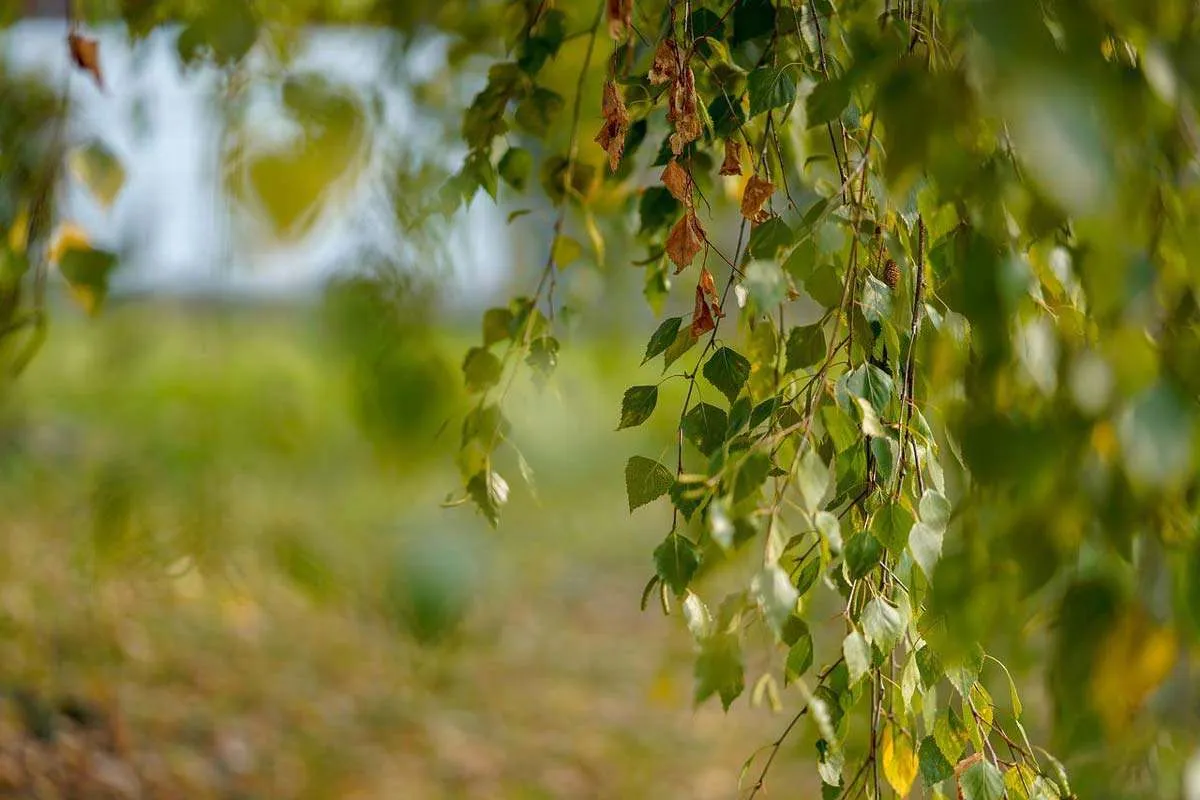
Vines can cause untold damage to the plant… if there is sufficient growth of the vines to do so. Here is how you need to deal with the growth of vines in your garden; and on your trees.
1 Assess the vine:
Before assessing the vine that is growing on your oak, it would be impossible to decide just how you can get rid of it. No matter what vine is; honeysuckle, poison ivy, English ivy or some other vine, identification is key to curing.
2. Decide on your course of action
There is no denying that vines on oaks look picturesque to say the least. And yet, you do not want your oak to die from suffocation. So decide on what you would like to do.
If you are loving your garden’s new look, try to maintain it. Allow the vines to grow a little, but not enough to completely cover your oak trunk and canopy. Instead, constantly prune it to keep the vine within check.
Maintenance is often a more intimidating process as compared to complete eradication. It requires regular pruning and ensuring the oak’s root system is safe. You could also try providing your oak with extra nutrients to assist its growth.
3. Go for complete eradication

Complete eradication can be satisfying as you pluck off the vines from your oaks. It can also be an extremely difficult process to carry out. It is tempting to just pull the vines off your tree, but this haphazard method of removal could backfire.
Intermittent removal of the vines is key here, which should systematically be removed from the tree’s roots, bark and canopy. In this system, the earlier you notice that your tree has vines growing on its bark the better it is.
There are two major ways of removing vines from your tree altogether:
- Hiring a professional
The idea that you try and remove all the vines in one go is fascinating, but that’s not the idea here. If you’re trying to remove the vines completely, you want to eliminate them, not just remove them from the bark.
Here is where a trained professional can actually assist you best. A quick removal may work best, if lady luck is in your favor, but that is not always the case. A more calculated approach is trickier, but much better and here’s where a professional can help best.
And that last is certainly true for poison ivy more than anything else. Removing the poison ivy with your bare hands will burn them.
If you’re fully covered with gloves on, you could cut the poison ivy from where it connects to the ground. Then spray the foliage climbing up the oak with a glyphosate spray and allow the poison ivy to die out.
Don’t pull off the poison ivy because that will harm you. The poison oak trees in your garden recieve must be given time to act.
Avoid spraying the glyphosate solution on exposed areas of the tree bark. Otherwise you will end up damaging your tree also. Considering all these precautions, the best idea here would be to opt for professional assistance.
- Remove the vines using your hands
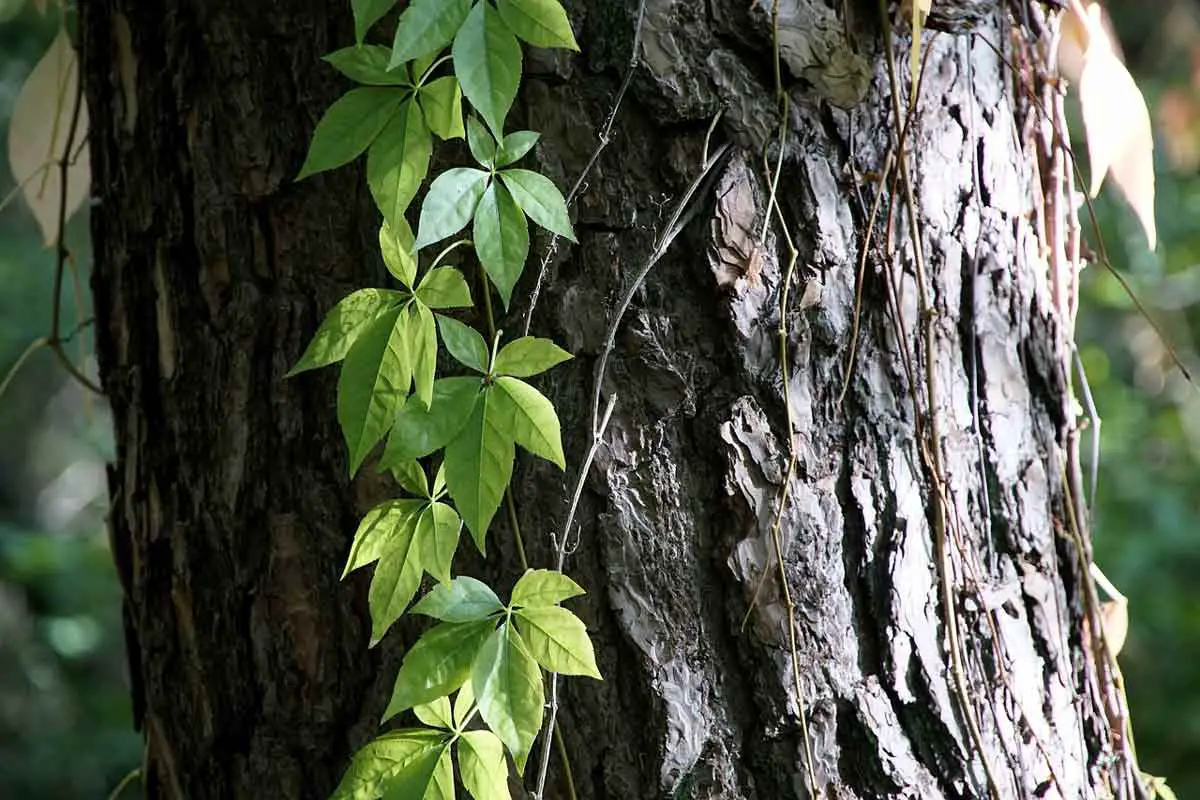
Shearing in such a case feels like a great idea. It is definitely very satisfying to cut off all the vines growing over your oak bark. You would become the knight in shining armor who magically releases the oak tree from its vine-prison.
Hold off on the heroics though. If, while removing the vine’s roots system you end up damaging the oak’s roots, you’d be doing untold harm. The tree could perish because of your haste.
Then again, you run the risk of encountering poison ivy. The problems that poison ivy can cause to your own safety are enough to consider hiring a professional.
If you are sure about it though, and plan on getting rid of the vines yourself, here’s how to do it:
First, ensure that the soil around the roots is soft and loose. This will make the vine removal easier. Take hand pruners to cut the vine stems, separating them from the roots. Avoid using the large shears which pose a bigger risk.
Secondly, pull out your oak’s roots as much as you can. You may have to repeat this step if you see fresh growth resurfacing. Eventually all the vine roots should also have been pulled out and away from the oak roots.
Never try to pull away the vines from the affected tree. This will damage the oak bark and damage your tree. Instead, let them die out on their own.
- Use vinegar for vine removal
WIth a pH of around 2.5, white vinegar or acetic acid as it is known, can be quite acidic. In fact, for ivy roots in particular, it is like poison. It is definitely acidic enough to burn the vines and let them die.
This is a substitute for the shearing method. It is not meant to poison oak trees in your garden, rather as a way to poison the vines off these trees.
It’ll require you to spray white vinegar on the vines wrapped around your trunk and within the oak bark. The vines should not be removed right away. Instead let the ‘poison oak magic; work!
Instead, once the spraying is completed, they should be left alone. Over the course of a week, the vinegar poison will take effect and the vines will turn brown and die. At this point, they may be pulled away.
You must take extreme caution at this stage of providing tree care to your oak. Vinegar is a strong acid. Spraying it on other plants, grass or any leaf could damage them also!
